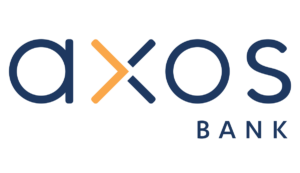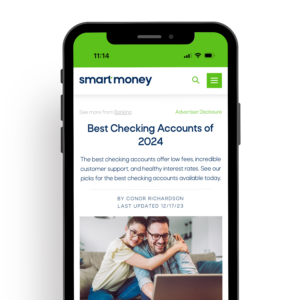Takeaways
- Loans are an agreement for a creditor to pay the lender back their principal plus interest.
- Lenders vet prospective borrowers based on their credit score, income, and debt level.
- Lenders charge higher interest rates to riskier borrowers and provide less favorable terms.
- Loans are divided into two main categories: secured and unsecured.
- Secured loans are backed by collateral like a house, car, boat, or business.
Some of the links in this article are from advertising partners of Smart Money, which does not influence our evaluations or recommendations. We work to provide you with accurate and reliable information. Our opinions are our own.
What is a Loan?
A loan is a binding agreement between two parties where one party, the lender, gives another party, the borrower, money with the express understanding that the borrower will pay back the lender over time plus interest. Loans are issued by banks, credit unions, credit card companies, online lenders, or other financial institutions.
These lenders issue many different types of loans to finance purchases, like buying your first home or purchasing a new car. Depending on the loan structure, the loan can be for a specific amount of money, length of time, a revolving line of credit, or a one-time amount. The type of loan and riskiness of the borrower determines how much interest the bank or credit union will charge. Lenders will assess your credit score and history during the screening process. Here’s how the loan process really works.
How Loans Work
When you don’t have enough cash to purchase a major good or service, you can take out a loan to finance that purchase. Many items, such as a house, car, boat, or house renovation, are extremely expensive, and most people don’t have enough cash to pay for them.
Even if you do have the cash to make these purchases, you might not want to part with your hard-earned savings. Instead, you might choose to finance the purchase and commit to paying back a lender. You can do this by taking out a loan.
Learn how to build savings -> Emergency Fund or Slush Fund

Member FDIC
Axos Bank® Rewards Checking
Smart Money Rating: 5/5
APY: 3.30% with No Minimum Balance
Bonus Offer: Up to $300 Bonus (Terms Apply)
Depending on what you are trying to finance, you can get a loan from a bank, credit union, government, or other financial institution. The lender will want more information about you and your credit history as part of the process. You must provide the lender with specific personal details like your name, address, social security number, etc.
The lender will assess your ability to pay back the loan. To do this, they analyze your income, credit history, credit utilization, and debt-to-income ratio. The combination of this information allows the lender to decide whether to deny or approve your application.
If you are denied, you might have to apply with another lender. However, the lender will inform you about the loan terms if your application is approved. This is where you agree to the principal, interest rate, loan length, payment terms, fees, and other features, such as the ability to pay off your loan early. Once you agree with the lender on the terms, you will sign the loan document, either with a physical or digital signature.
After the loan terms commence, you are subject to them. This usually means making monthly payments on the principal plus interest. Diligently making payments on time can boost your credit score.
The opposite is also true. If you miss or don’t make payments, you could be subject to compounding interest, increasing the amount you owe the lender. It is critical to ensure you have budgeted for your loan payments. Missed or late payments can damage your FICO or VantageScore, causing you to get worse terms in the future.
Must Know Loan Terminology
Before signing any loan (e.g., mortgage), revolving credit line (e.g., credit card), or structured document, it’s imperative to familiarize yourself with common loan terminology. Here are some key loan terms to understand:
- Principal is the amount of money you are borrowing from the lender. As you make your monthly payments, part of your payment will reduce your principal and part will pay for interest. Your principal amount could be $100,000 for a personal loan to renovate your home or $10,000 for an auto loan to buy a used car.
- Interest is the cost of borrowing money. Lenders charge borrowers interest because they need to make a return on their capital, and interest compensates them for deferring consumption. You may see a stated interest on your loan documents, which differs from the Annual Percentage Rate, or APR. APR considers interest plus other fees and is a required disclosure for banks, credit unions, and other lenders. Read more about how APR differs from Annual Percentage Yield (APY).
- Installment Payments are recurring regular payments made to your lender. These payments can be monthly, quarterly, or annually. However, the most common installment payment timing is monthly.
- Loan Term is another name for the length of a loan. It is the time you must repay a loan plus interest. Short-term loans, like payday loans, can only last a couple of weeks, while a 30-year fixed-rate mortgage gives you the flexibility to pay down your mortgage over 30 years.
Get Smart With Your Money
Fresh weekly articles delivered straight to your inbox.
Enter your name and email for free tips and tricks.

Secured vs. Unsecured Loans
There are two general categories of loans: secured and unsecured loans. Here are the differences between the two:
Secured Loans
A physical asset like a house, car, boat, or business backs a secured loan. Secured loans have physical assets as collateral so that if you default, your lender can repossess the asset to pay off your loan. Of course, you want to avoid this because it can seriously damage your credit score.
Secured loans often have lower interest rates than unsecured ones because the lender can rely on taking the physical asset if you fall behind on your payments. This is why budgeting for loan payments is so critical.
Secured Loan Examples: Auto Loans or Mortgages
Calculate how much you can afford in debt payments with our 50/30/20 Budget Calculator.
Unsecured Loans
Unsecured loans are the opposite of secured loans. They are backed by the faith that you will make your installment payments on time. Lenders assess your credit utilization, debt-to-income ratios, and credit limits and then assign you an interest rate. Interest rates on unsecured loans tend to be higher than those on secured loans because the lender has less recourse if you default.
Unsecured Loan Examples: Payday Loans, Student Loans, or Personal Loans
Calculate how much you can afford in debt payments with our 50/30/20 Budget Calculator.
Types of Loans
Financial institutions have created a litany of credit products to service their customers. From credit cards to auto loans, you will most likely use at least one credit product. Here are several popular types of loans:
- Payday Loans are short-term loans to help bridge you from one paycheck to another. They are usually for small amounts, like $100 to $500. Read more about Payday Loans.
- Student Loans are longer-term loans that finance attending college or graduate school. The rising cost of education has ballooned in the last decade, and most graduates must pay off student loans after graduation. Learn more about Student Loans.
- Auto Loans finance vehicle purchases. Increases in transportation and vehicle costs have been one of the main drivers of inflation over the last several years. You can finance your purchase if you can’t afford a car with cash. Learn how to apply for an Auto Loan.
- Personal Loans are long-term loans used to finance house renovations, moving expenses, and medical bills. These unsecured loans have interest rates ranging from the single digits to the high double digits. Read our step-by-step guide on getting a Personal Loan.
- Mortgages are ultra-long-term secured loans to assist you in buying your dream home. Mortgages are the largest consumer debt category [1]. Whether you are buying your first house or are a seasoned real estate investor, most folks finance real estate purchases. Mortgages and real estate are virtually synonymous. Learn about Mortgages.
Smart Summary
Loans are a regular part of the U.S. economy. Depending on the type of loan you want to get, you need to analyze your credit history, income, and ability to pay it off. This pre-assessment will help you when applying for a credit card, get a 15-year fixed-rate mortgage, or any other type of loan. Understanding the key terms of a loan is a smart money move because they transcend multiple loan types. Consult your financial plan to make sure getting a loan fits your financial goals.
(1) Federal Reserve Bank of New York. Household Debt and Credit Report. Last Accessed April 13, 2024.











